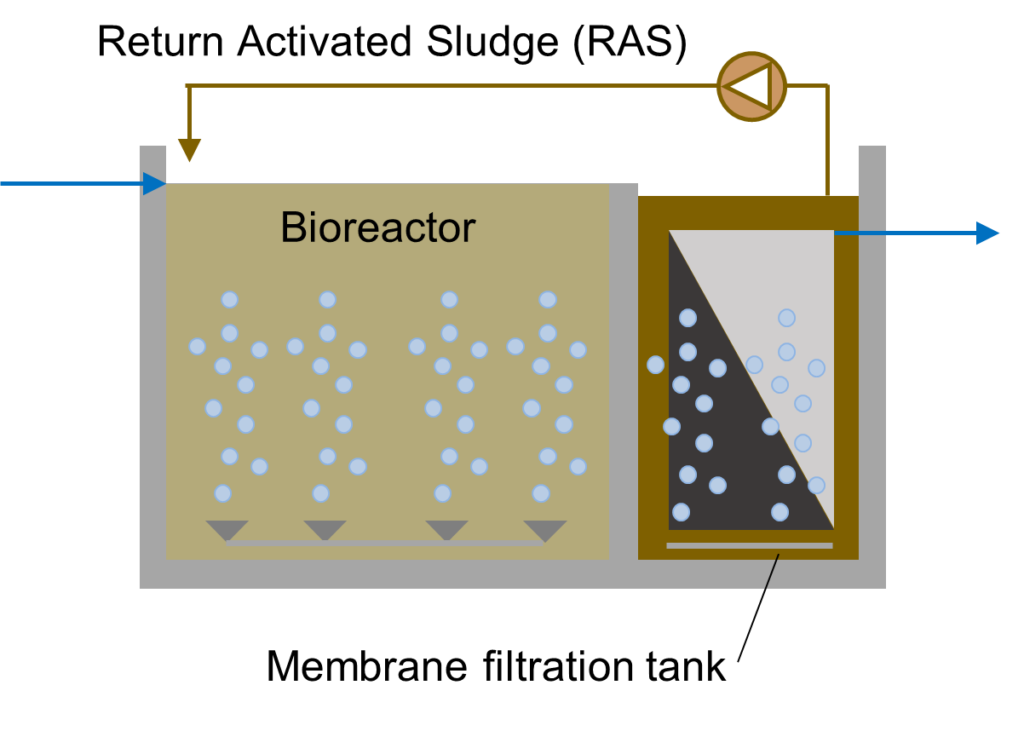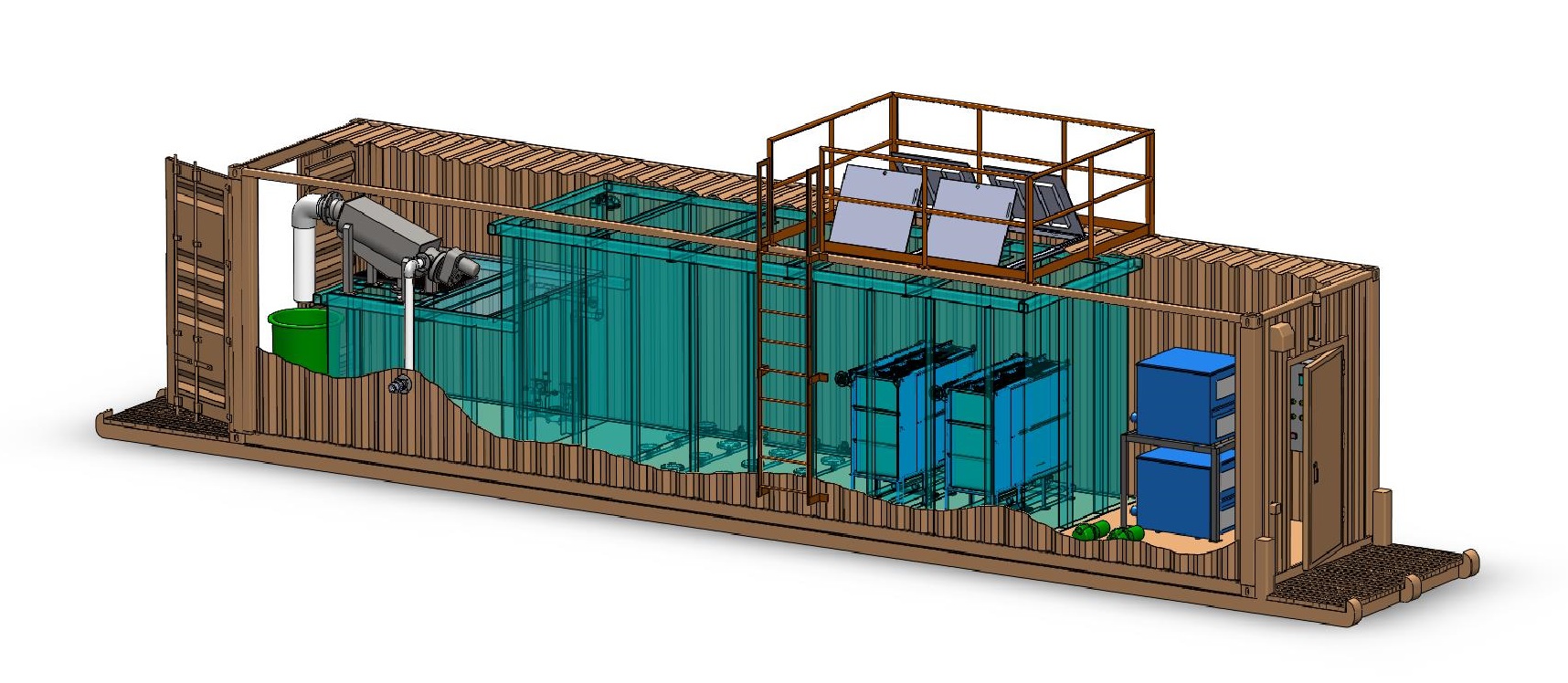The Role of Membrane Bioreactor in Achieving Higher Effluent Quality Standards
Wiki Article
The Benefits of Membrane Layer Bioreactors in Lasting Wastewater Monitoring
Membrane layer bioreactors (MBRs) stand for a pivotal improvement in lasting wastewater monitoring, properly combining organic treatment with sophisticated membrane filtration technology. This assimilation not only enhances effluent quality by efficiently removing pollutants however likewise opens opportunities for water reuse in various applications, thus attending to the pushing requirement for resource conservation. The small design of MBRs adds to substantial decreases in ecological influence and operational prices. As the demand for lasting solutions magnifies, checking out the multifaceted benefits of MBRs might disclose unforeseen implications for the future of wastewater therapy systems.Overview of Membrane Layer Bioreactors
Membrane bioreactors (MBRs) stand for a considerable advancement in wastewater therapy innovation, incorporating biological destruction with membrane filtering to improve the performance of the treatment procedure. This innovative system integrates the benefits of conventional triggered sludge procedures with membrane innovation, enabling enhanced solid-liquid splitting up. MBRs utilize semi-permeable membrane layers to different treated water from biomass, resulting in top quality effluent that can be recycled or securely discharged into the environment.The functional layout of MBRs usually entails a bioreactor where bacteria damage down raw material, complied with by a membrane layer unit that filters the blended liquor. This setup not only minimizes the impact of the therapy facility but likewise enables for greater biomass concentrations and decreased hydraulic retention times. Moreover, MBRs can dealing with a broader range of pollutants, consisting of microorganisms and nutrients, making them suitable for various applications, from community wastewater treatment to industrial effluent processing.
The assimilation of MBRs right into wastewater monitoring systems is a measure of an expanding fad in the direction of sustainable and efficient techniques in ecological design. Their capacity to generate high-grade effluent while decreasing area requirements positions MBR modern technology as a principal in contemporary wastewater treatment solutions.
Enhanced Effluent Quality

The membrane purification procedure works as a physical obstacle, enabling the retention of microbes and particle issue, which adds to a clearer and cleaner effluent (Membrane Bioreactor). In addition, MBRs operate at greater biomass focus than traditional activated sludge systems, advertising a lot more efficient biodegradation of toxins. This results in a decrease in biochemical oxygen demand (FIGURE) and overall put on hold solids (TSS) levels in the last effluent
Additionally, MBRs show exceptional performance in dealing with tough wastewater structures, such as commercial effluents and wastewater with high nutrient lots. Because of this, the effluent produced is frequently of better, permitting more flexible disposal options and minimized ecological effect. Inevitably, the enhanced effluent quality accomplished via MBR innovation underscores its important role in progressing lasting wastewater monitoring practices.
Water Reuse Opportunities
The premium effluent created by membrane layer bioreactors (MBRs) opens up considerable possibilities for water reuse in different applications. MBRs successfully eliminate contaminants, consisting of pathogens, suspended solids, and organic matter, resulting in treated water that satisfies or goes beyond regulative standards for reuse. This high quality enables for the application of water reusing campaigns across varied fields.One popular application remains in farming, where dealt with wastewater can be utilized for irrigation, advertising lasting farming practices while preserving freshwater sources. Furthermore, MBR-treated effluent can be used for commercial processes such as cooling, cleansing, and as a process water resource, significantly decreasing the need for potable water in these procedures.
In metropolitan atmospheres, MBRs help with the use of reclaimed water for landscape watering, bathroom flushing, and other non-potable uses, contributing to the total durability of supply of water systems. The combination of MBR innovation in decentralized systems help in handling localized water demands, specifically in water-scarce areas.
Decreased Ecological Impact
Just how can the fostering of membrane layer bioreactors (MBRs) add to a decreased environmental impact in wastewater administration? MBRs dramatically enhance the treatment effectiveness of wastewater while minimizing environmental disturbances. Membrane Bioreactor.Moreover, MBRs run at lower hydraulic retention times contrasted to traditional systems, leading to smaller sized treatment plant impacts. This compact style minimizes land use, thus protecting all-natural habitats and biodiversity. The procedure additionally creates less sludge than standard techniques, mitigating disposal challenges and reducing greenhouse gas discharges linked with sludge management.
Furthermore, MBRs promote the healing of valuable sources, such as water and nutrients, you can try these out adding to a circular economy. By enabling water reuse for watering or industrial procedures, MBRs help alleviate freshwater deficiency, therefore advertising sustainable water make use of practices. Eventually, the fostering of MBR innovation stands for a significant stride in the direction of decreasing the environmental impact of wastewater monitoring systems.
Economic Benefits of MBRs

In addition, MBRs help with the anonymous manufacturing of high-grade effluent, which can be recycled for numerous applications, such as agricultural irrigation and commercial procedures - Membrane Bioreactor. This reuse capability can considerably reduce water purchase costs, offering a financial incentive for markets encountering stringent water guidelines
The portable style of MBR systems additionally causes reduced land demands, which is especially important in metropolitan locations where genuine estate is pricey. By decreasing area, sectors and communities can minimize land purchase and maintenance expenses.
In addition, MBRs often need much less constant maintenance and have a longer lifespan than traditional systems, even more adding to set you back financial savings. In recap, the economic advantages of MBRs-- ranging from minimized functional expenses to land savings and effluent reuse-- make them an engaging selection for sustainable wastewater monitoring, offering both he has a good point prompt and lasting economic advantages.
Verdict
Additionally, MBRs contribute to decreased ecological effects with compact designs and reduced sludge generation. Economic benefits better boost their viability, making MBRs an encouraging remedy for resolving the difficulties of wastewater treatment and promoting sustainable resource monitoring.
Membrane bioreactors (MBRs) stand for a crucial advancement in sustainable wastewater management, efficiently combining biological therapy with advanced membrane layer filtration technology.Membrane bioreactors (MBRs) stand for a considerable development in wastewater therapy modern technology, integrating organic deterioration with membrane layer filtering to enhance the efficiency of the treatment process.Accomplishing boosted effluent high quality is one of the most significant benefits of using membrane bioreactors (MBRs) in wastewater treatment.Additionally, MBRs demonstrate superb performance in treating challenging wastewater make-ups, such as industrial effluents and wastewater with high nutrient lots.Integrating membrane layer bioreactors (MBRs) into wastewater administration not just minimizes environmental influence yet additionally offers substantial financial benefits.
Report this wiki page